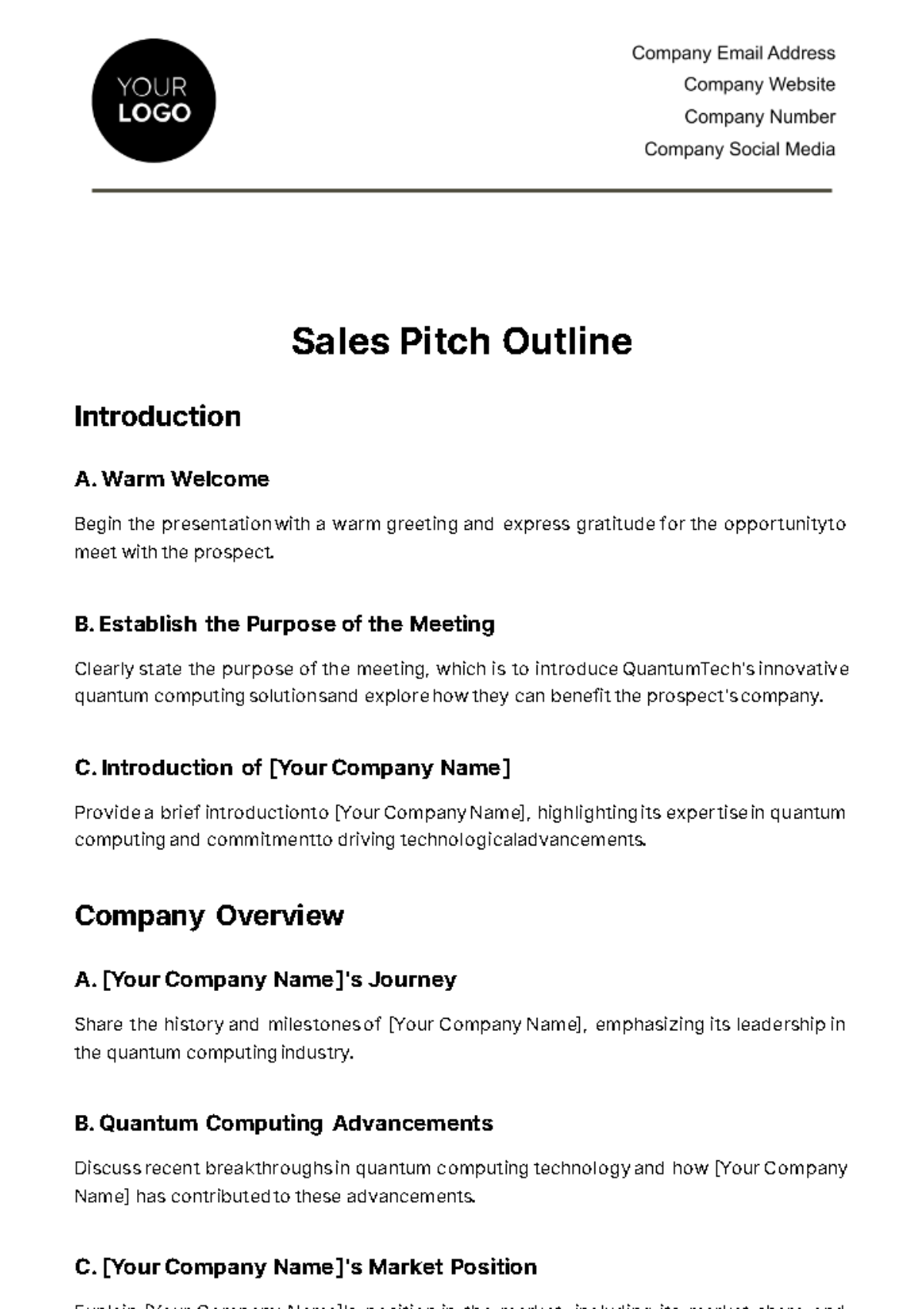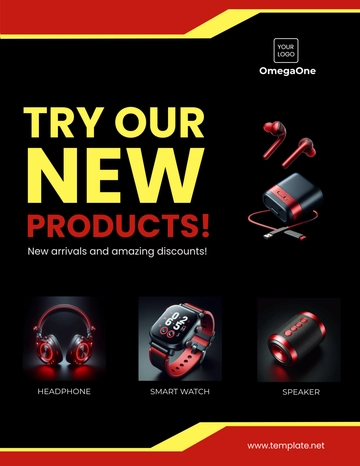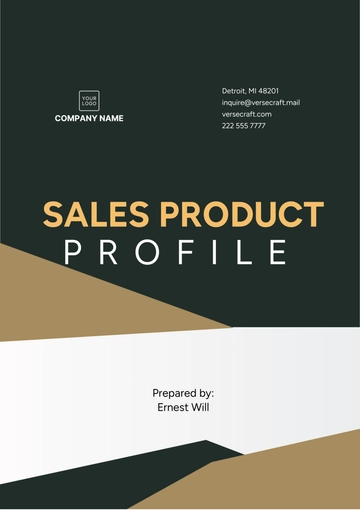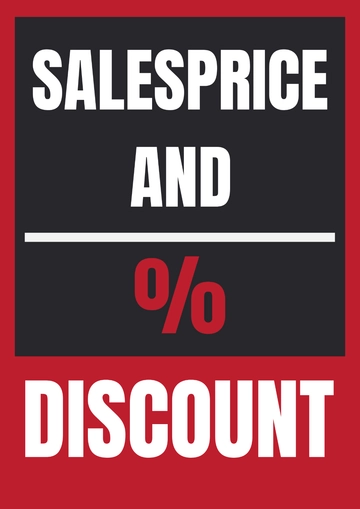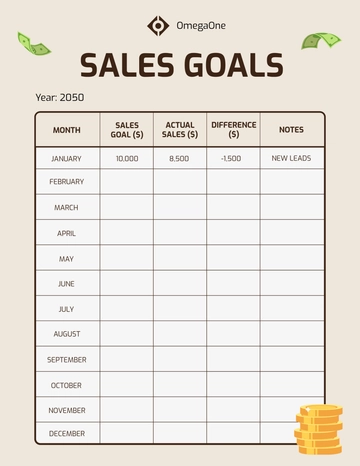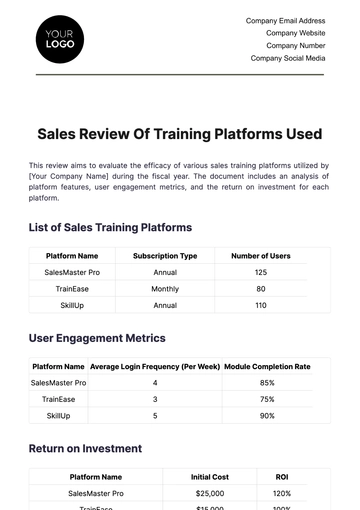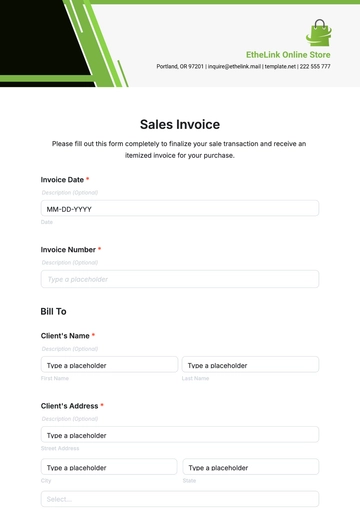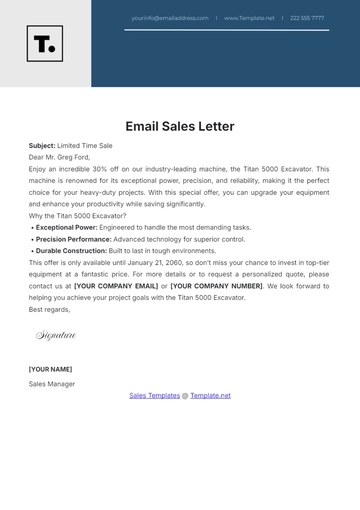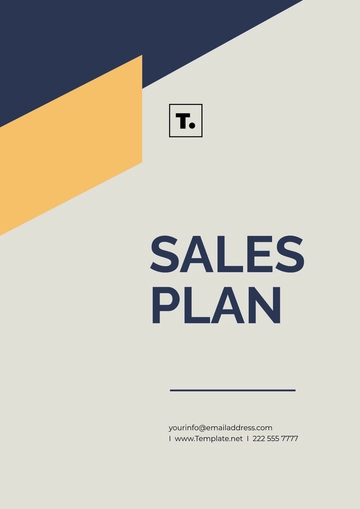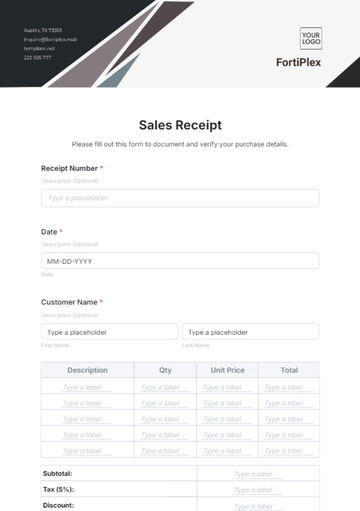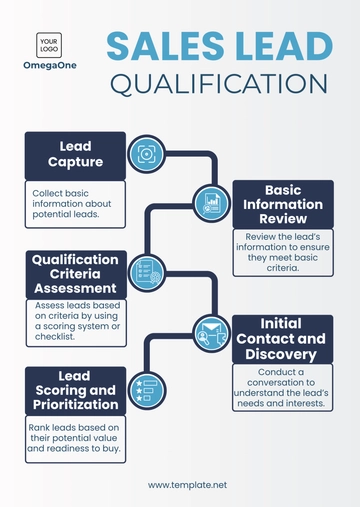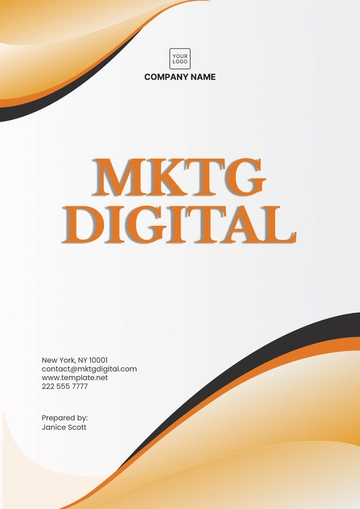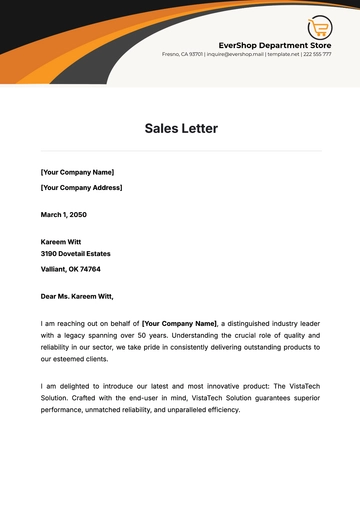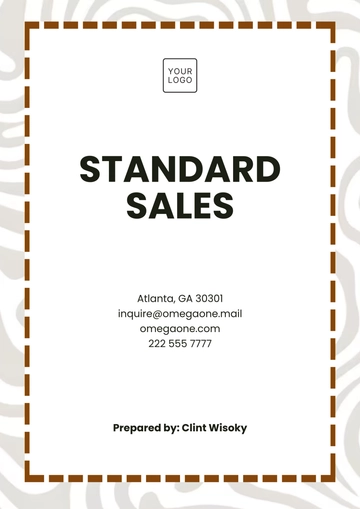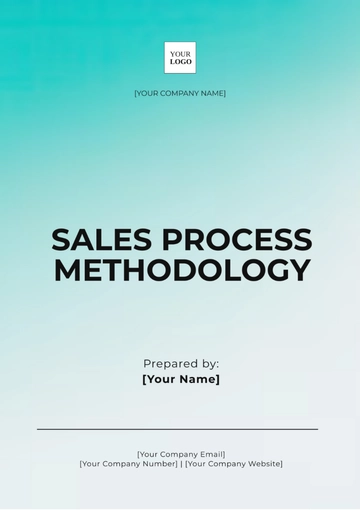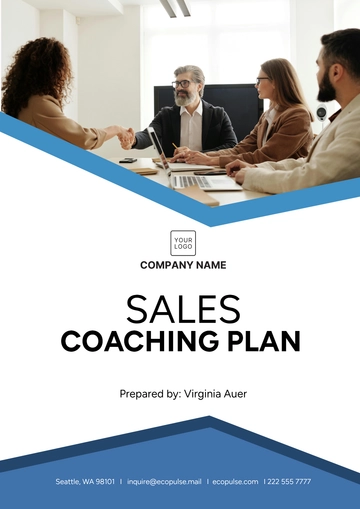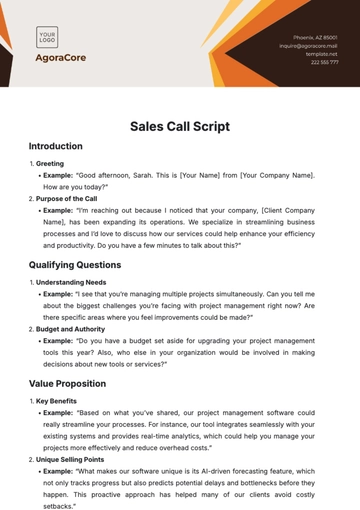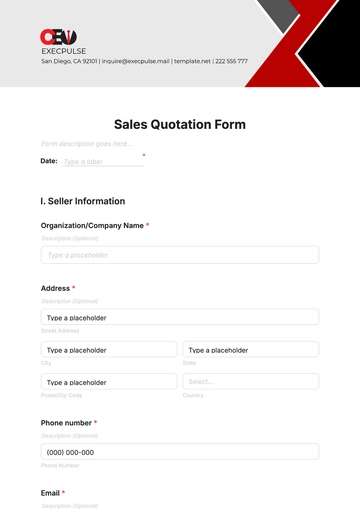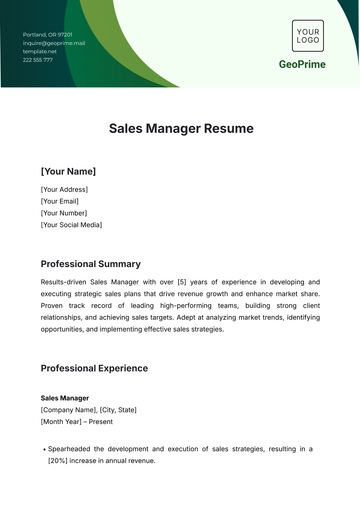Sales Pitch Outline
Introduction
A. Warm Welcome
Begin the presentation with a warm greeting and express gratitude for the opportunity to meet with the prospect.
B. Establish the Purpose of the Meeting
Clearly state the purpose of the meeting, which is to introduce QuantumTech's innovative quantum computing solutions and explore how they can benefit the prospect's company.
C. Introduction of [Your Company Name]
Provide a brief introduction to [Your Company Name], highlighting its expertise in quantum computing and commitment to driving technological advancements.
Company Overview
A. [Your Company Name]'s Journey
Share the history and milestones of [Your Company Name], emphasizing its leadership in the quantum computing industry.
B. Quantum Computing Advancements
Discuss recent breakthroughs in quantum computing technology and how [Your Company Name] has contributed to these advancements.
C. [Your Company Name]'s Market Position
Explain [Your Company Name]'s position in the market, including its market share and customer satisfaction levels.
Current Market Landscape
A. Industry Trends and Challenges
Present current trends and challenges in the quantum computing industry, demonstrating your understanding of the prospect's environment.
B. Competition Analysis
Provide a brief analysis of key competitors, highlighting [Your Company Name]'s differentiators.
C. Market Potential
Discuss the potential for growth and innovation in the quantum computing market, showcasing opportunities for the prospect.
Quantum Computing Solutions
A. Product Portfolio Overview
Quantum Processors
Explain [Your Company Name]'s quantum processors, their capabilities, and how they outperform traditional computing.
Quantum Software
Describe the innovative software solutions that [Your Company Name] offers to optimize quantum computing processes.
Quantum Cloud Services
Present the advantages of [Your Company Name]'s cloud services, enabling easy access to quantum computing resources.
B. Unique Selling Points
Highlight [Your Company Name]'s unique features and technology that set it apart from competitors.
C. Case Studies and Success Stories
Share real-world examples of how [Your Company Name]'s solutions have delivered value to other businesses.
Tailored Solutions for Prospect Co.
A. Needs Assessment
Discuss the findings from the prospect's specific needs assessment, emphasizing the customization of solutions.
B. Customization of Solutions
Explain how [Your Company Name] tailors its solutions to align with the unique requirements and goals of [Prospect's Company Name].
C. Alignment with [Prospect's Company Name] Goals
Emphasize how [Your Company Name]'s solutions can directly contribute to achieving the prospect's business objectives.
Benefits and ROI
A. Cost Savings
Detail how [Your Company Name]'s solutions can lead to cost savings in terms of computing resources and energy efficiency.
B. Performance Improvements
Showcase the potential for significant performance enhancements in data processing and complex problem-solving.
C. Competitive Advantage
Explain how adopting [Your Company Name]'s solutions can provide a competitive edge in the market.
D. Long-term Benefits
Discuss the sustainable and long-term advantages of partnering with [Your Company Name].
Implementation and Support
A. Deployment Process
Walk the prospect through the implementation process, ensuring a smooth transition to [Your Company Name]'s solutions.
B. Training and Onboarding
Discuss the training and onboarding resources [Your Company Name] offers to help the prospect's team get acquainted with the new solutions.
C. Ongoing Support and Maintenance
Highlight the commitment to providing ongoing support, updates, and maintenance services, ensuring a seamless experience.
Pricing and Packages
A. Flexible Pricing Options
Present various pricing options, including subscription models or one-time purchases, to meet the prospect's budgetary needs.
B. Package Comparison
Compare different product packages, demonstrating the features and benefits of each.
C. Return on Investment Analysis
Offer an ROI analysis that shows how the prospect's investment will pay off in terms of efficiency gains and cost reductions.
Next Steps
A. Discussion on Prospects' Questions and Concerns
Encourage open dialogue to address any questions or concerns the prospect may have.
B. Timeline for Decision-Making
Discuss the timeline for decision-making, including when the prospect can expect a proposal or further details.
C. Demo or Further Information Needs
Offer to provide a live demo of the solutions or any additional information the prospect requires for a well-informed decision.
Closing
A. Recap of Key Points
Summarize the main benefits and selling points of [Your Company Name]'s solutions.
B. Express Enthusiasm to Partner with [Prospect's Company Name]
Convey your excitement about the potential partnership, indicating [Your Company Name]'s commitment to delivering value.
C. Arrange for Follow-up Meetings
Propose a follow-up meeting to delve deeper into specific requirements and finalize details.
Q&A
A. Open the Floor for Questions
Encourage the prospect to ask any remaining questions or seek clarifications on the presentation.
B. Address Any Concerns or Clarifications
Provide comprehensive answers to address any concerns or uncertainties.
Follow-Up Plan
A. Send Meeting Recap and Presentation Materials
Mention that you will send a recap of the meeting, along with the presentation materials, for their reference.
B. Schedule Follow-up Meeting
Arrange for the next meeting to continue discussions and move closer to a decision.
Thank You
A. Express Gratitude for Their Time and Consideration
Thank the prospect for their time, attention, and consideration of [Your Company Name]'s solutions.
B. Reiterate the Value of the Potential Partnership
Remind the prospect of the valuable partnership that can drive their business forward.
Sales Templates @Template.net
